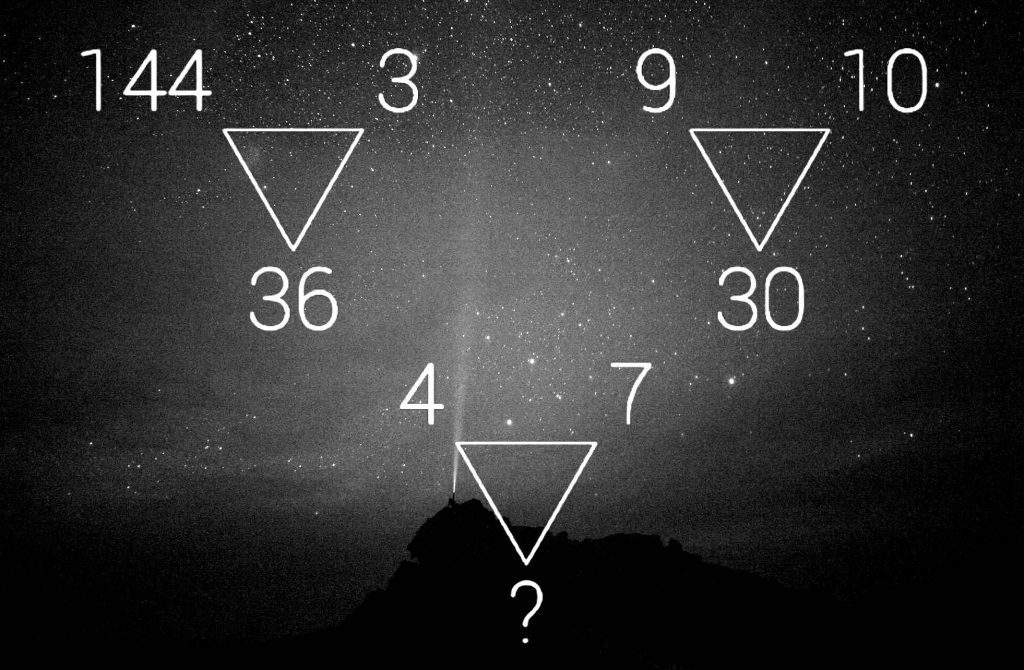
Do you love giving your brain a good workout with puzzles? Here’s an intriguing mathematical brain teaser that will put your logic and number-crunching skills to the test. This puzzle isn’t just about solving equations—it’s about discovering hidden patterns and relationships between numbers. Ready to dive in?
This puzzle features triangles with numbers in and around them. Your challenge is to determine the relationship between these numbers and use the identified pattern to solve for a missing number. It’s an excellent exercise in pattern recognition and mathematical reasoning.
A common mistake when tackling mathematical puzzles is to rush to conclusions without truly understanding the underlying pattern. Many people try to randomly apply basic operations (addition, subtraction, multiplication, or division), hoping to stumble upon the right answer, which often leads to frustration. Instead, the key is to carefully analyze the relationships between the numbers and consider how they interact within the puzzle’s structure.
Here’s how to approach this puzzle:
- Observation: Examine the numbers outside and inside the triangles. For example, in one triangle, the numbers are 144, 36, and 3. In another triangle, the numbers are 9, 10, and 30. How are they related? Then deduce the remaining shape.
- Applying the Pattern: Identify the pattern in the operations:
* For the first triangle: 3 x 12 = 36, and 12 x 12 = 144
* For the second triangle: 10 x 3 = 30, and 3 x 3 = 9
* From there, deduce the required triangle: 7 x 2 = 14, and 2 x 2 = 4 Thus, the answer is 14.
Now that you’ve seen how to unravel this puzzle step by step, what do you think? Was your initial guess correct, or did you find this breakdown helpful? Puzzles like these are fantastic for developing critical thinking and problem-solving skills. They encourage us to look beyond the obvious and use logical reasoning creatively.
I encourage you to leave your thoughts and answers in the comments below. Did you find an alternate method, or did you solve it even before reading the explanation? If you enjoyed this challenge, try creating a similar puzzle yourself and share it! Let’s keep our brains sharp and our logic on point by tackling more of these engaging puzzles.


